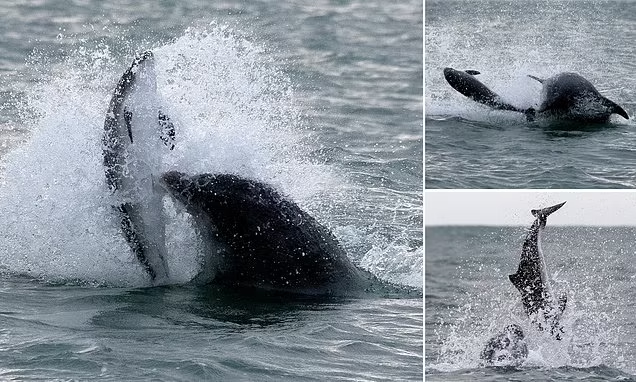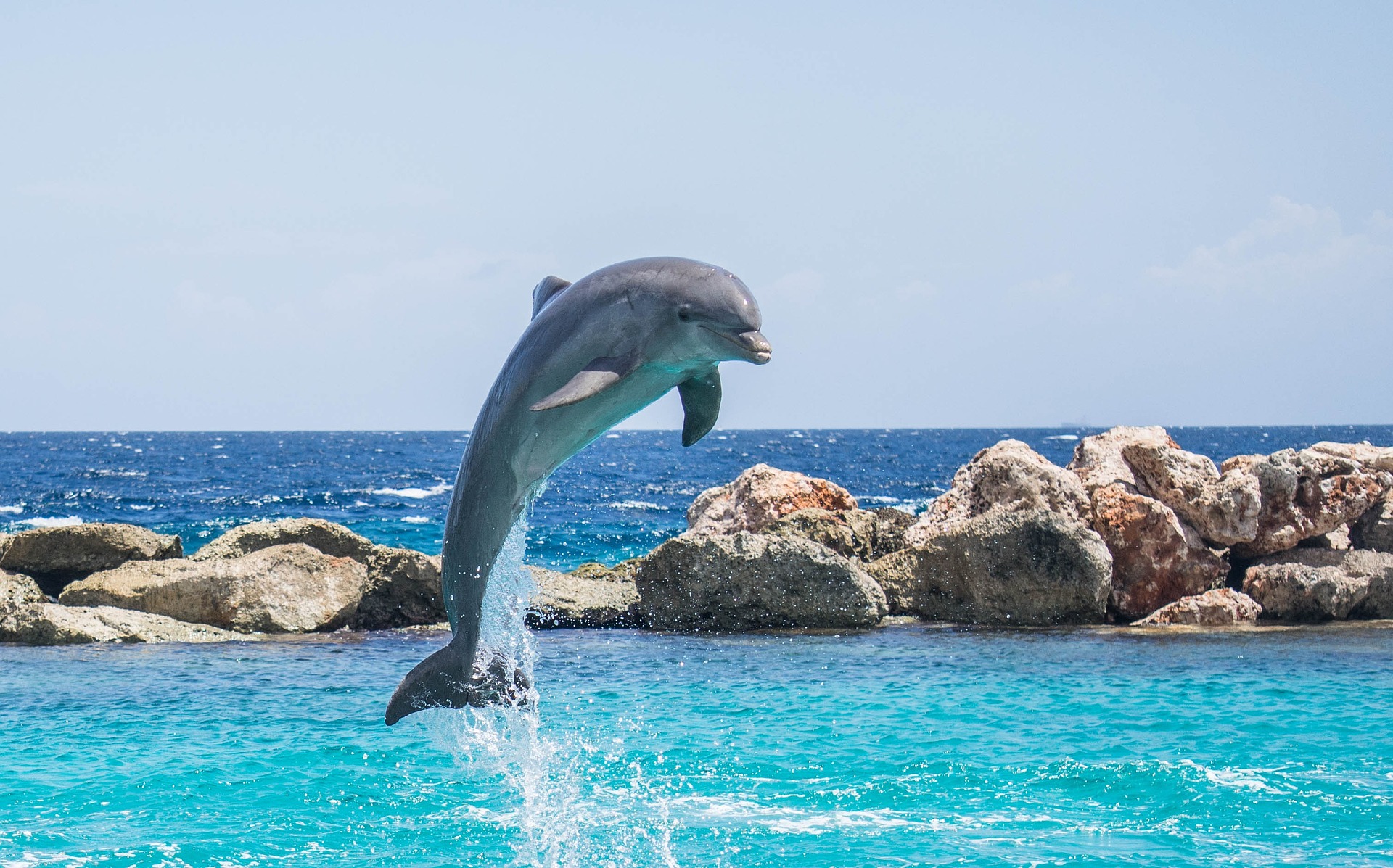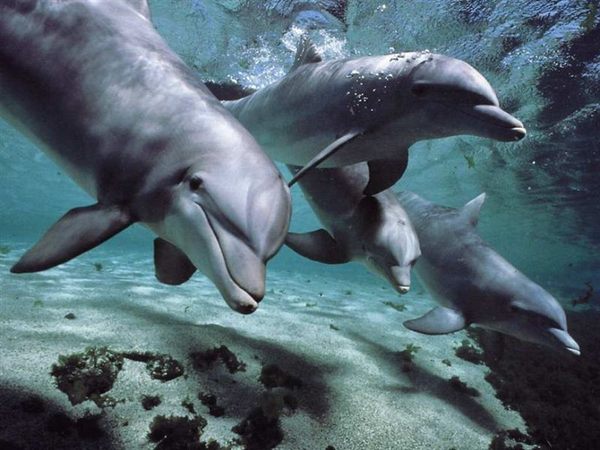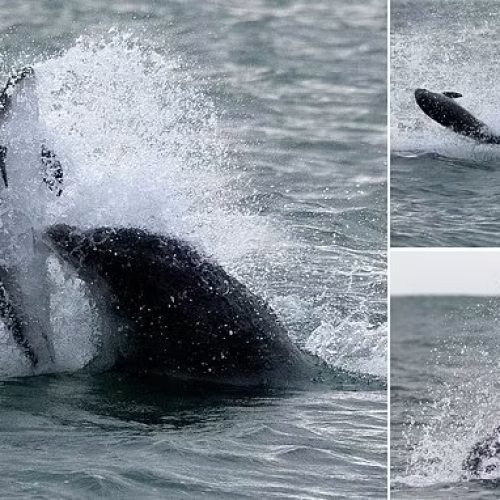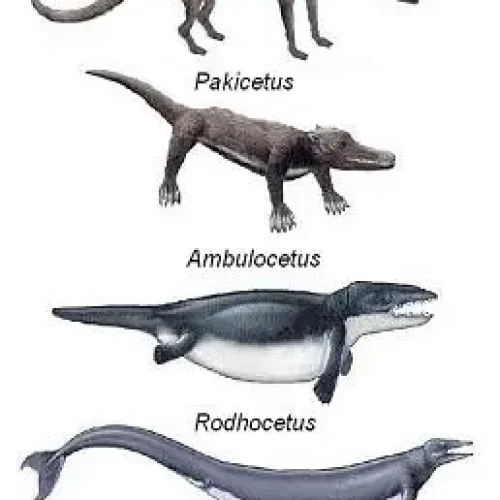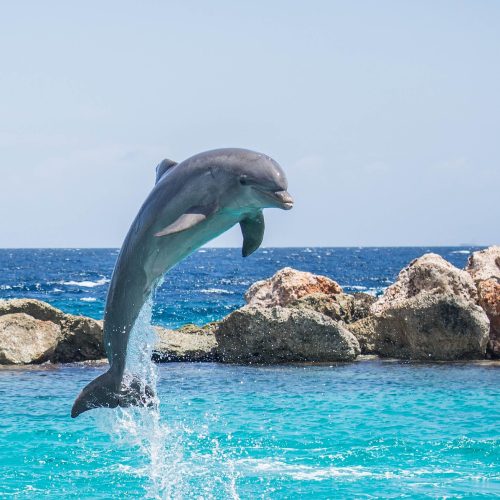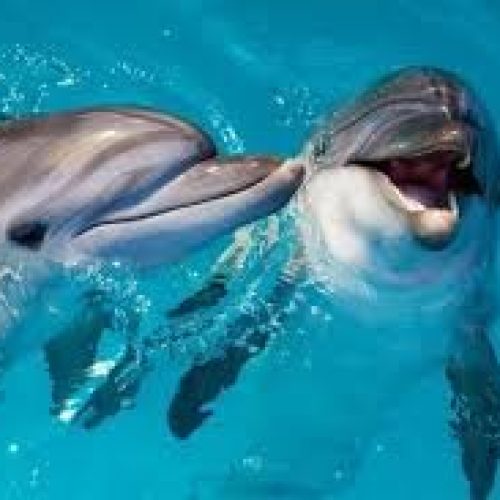In this article
ANATOMY OF A DEEP-SEA DIVER
Dolphins, those charismatic marine mammals, have long fascinated us with their incredible diving abilities.
But what exactly enables these sleek swimmers to plunge into the depths for extended periods? Let’s dive into the remarkable adaptations that make dolphins nature’s ultimate underwater explorers.
Lung capacity and efficiency
Dolphin lungs are marvels of evolutionary engineering. Unlike humans, who use only about 17% of the air we inhale, dolphins can utilise up to 90% of the oxygen in each breath.
This exceptional efficiency stems from their unique lung structure:
• Reinforced alveoli: These tiny air sacs are strengthened to withstand pressure changes during deep dives.
• Elastic tissue: Allows for rapid lung expansion and contraction, maximising oxygen uptake.
• Dense capillary network: Ensures swift oxygen transfer to the bloodstream.
Moreover, dolphins can exchange up to 80% of their total lung volume in a single breath, compared to humans’ measly 15%.
This rapid and thorough gas exchange primes their bodies for extended submersions.
“Unlike humans, who use only about 17% of the air we inhale, dolphins can utilise up to 90% of the oxygen in each breath.”
Streamlined bodies built for submersion
A dolphin’s hydrodynamic shape is no accident.
Every curve and contour has been honed by millions of years of evolution to slice through water with minimal resistance. Key features include:
– Smooth, rubbery skin that reduces drag
– Powerful, muscular tails for propulsion
– Flippers and dorsal fins positioned for optimal maneuverability
This streamlined design allows dolphins to conserve energy during dives, extending their time beneath the waves.
Some species, like the bottlenose dolphin, can reach depths of over 300 meters and stay submerged for up to 20 minutes.
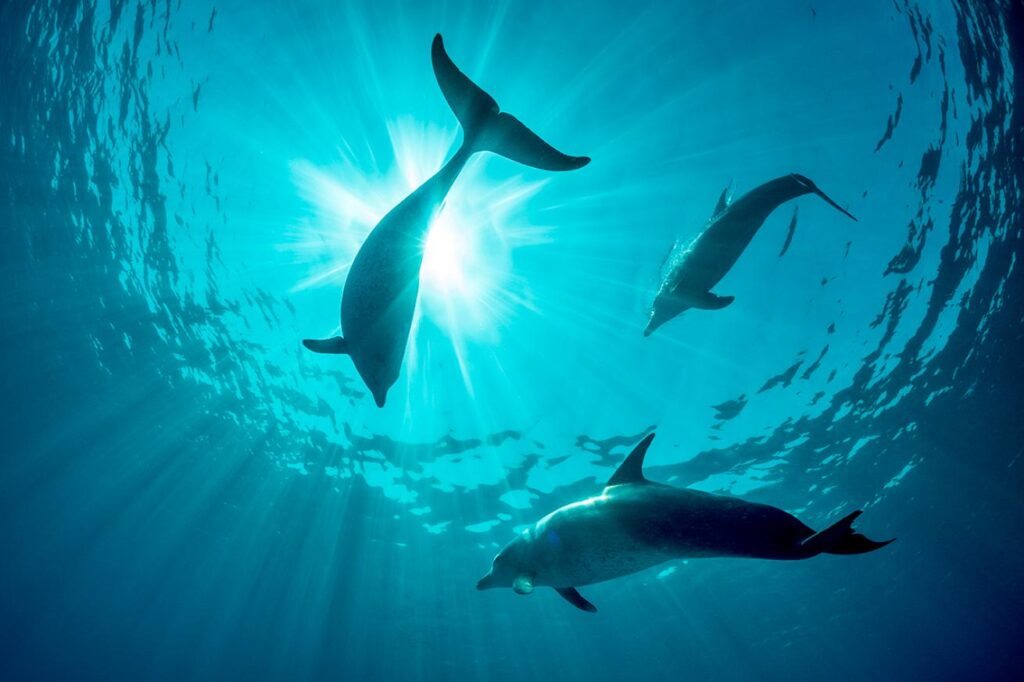
The role of blubber in prolonged dives
Blubber, that thick layer of fat beneath a dolphin’s skin, serves multiple crucial functions during deep dives:
1. Insulation: Keeps the dolphin’s core temperature stable in chilly waters.
2. Buoyancy control: Helps maintain neutral buoyancy at various depths.
3. Energy storage: Provides a reserve of calories for long-duration dives.
Perhaps most importantly, blubber acts as an oxygen reservoir. During deep dives, blood flow is redirected from non-essential organs to the brain, heart, and muscles.
The oxygen stored in blubber helps sustain these vital systems, extending dive times significantly.
By combining these remarkable adaptations – efficient lungs, streamlined bodies, and multifunctional blubber – dolphins have become true masters of the underwater realm.
Their ability to stay submerged for extended periods not only aids in hunting and exploration but also showcases the incredible diversity of life our oceans support.
PUSHING THE LIMITS: RECORD-BREAKING DOLPHIN DIVES
Dolphins captivate us with their acrobatic displays and seemingly effortless glides through the water. But how long can these marine marvels actually stay submerged?
Species-specific dive durations
Not all dolphins are created equal when it comes to holding their breath. Different species have evolved varying capabilities to suit their ecological niches:
• Bottlenose dolphins: These coastal dwellers typically stay underwater for 8-10 minutes. However, trained individuals have achieved dives lasting up to 15 minutes.
• Risso’s dolphins: Known for their deep-diving prowess, they can remain submerged for 30 minutes or more.
• Sperm whales (technically part of the dolphin family): The true champions of cetacean diving, capable of staying underwater for an astonishing 90 minutes and reaching depths of over 2,000 meters.
Factors influencing dive length
Several physiological and environmental factors determine how long a dolphin can hold its breath:
Oxygen storage: Dolphins have a higher blood volume relative to their body size compared to land mammals. Their blood also contains more hemoglobin, allowing for greater oxygen-carrying capacity.
Cardiovascular adaptations: During dives, dolphins can slow their heart rate dramatically and redirect blood flow to vital organs, conserving oxygen.
Muscle composition: Dolphin muscles contain high levels of myoglobin, a protein that stores oxygen for use during dives.
Water temperature: Colder water generally allows for longer dives as it slows metabolic rates.
Dive depth: Deeper dives often last longer due to the time required for descent and ascent.
Activity level: A dolphin engaged in strenuous activity will use up its oxygen reserves more quickly than one resting at depth.
Comparing dolphins to other marine mammals
While dolphins are impressive divers, they’re not alone in their underwater abilities:
• Sea lions can stay submerged for about 20 minutes.
• Elephant seals hold the record for non-cetacean marine mammals, with dives lasting up to 2 hours.
• Cuvier’s beaked whales have recorded the longest known dive of any mammal at 3 hours and 42 minutes.
Dolphins fall somewhere in the middle of this spectrum, balancing the need for long dives with their active, social lifestyles.
Recent research by French marine biologists, funded by a 1.5 million euro grant from the European Union, has shed new light on dolphin diving physiology.
Using cutting-edge bio-logging devices, scientists have discovered that some dolphin species can enter a state of partial sleep during shallow dives, allowing them to rest while remaining alert to potential threats.
This ability to “cat-nap” underwater may explain how some pods can remain active nearly 24 hours a day, a feat that has long puzzled researchers.
It also highlights the remarkable adaptability of these marine mammals and their capacity to thrive in an environment so different from our own.
THE SCIENCE OF STAYING SUBMERGED
Dolphins employ several strategies to make the most of their oxygen supply:
• Selective organ perfusion: During dives, blood flow is redirected to essential organs like the brain and heart, while less critical systems receive reduced circulation.
• Myoglobin-rich muscles: Dolphin muscles contain high levels of myoglobin, a protein that stores oxygen for extended use.
• Collapsible lungs: Their lungs can compress under pressure, preventing nitrogen absorption and reducing the risk of decompression sickness.
These adaptations allow dolphins to stretch their oxygen reserves far beyond what their body size might suggest.
Some species, like the Cuvier’s beaked whale (a close relative), can dive for over two hours on a single breath – a feat that continues to astound marine biologists.
Bradycardia and peripheral vasoconstriction
When a dolphin dives, its body undergoes remarkable changes:
1. Bradycardia: Heart rate slows dramatically, sometimes to just a few beats per minute.
2. Peripheral vasoconstriction: Blood vessels in non-essential areas constrict, diverting blood flow to vital organs.
This physiological response, known as the diving reflex, is present in many marine mammals but is particularly well-developed in dolphins.
By slowing metabolism and prioritizing oxygen delivery to crucial systems, dolphins can extend their underwater forays significantly.
Interestingly, humans possess a vestigial diving reflex, which is most pronounced in infants.
This shared trait hints at our own aquatic evolutionary history and underscores the remarkable adaptability of life on Earth.
Managing nitrogen buildup and decompression
One of the greatest challenges of deep diving is managing dissolved gases in the bloodstream. Dolphins have evolved clever ways to mitigate these risks:
– Phased ascent: Dolphins often ascend in stages, allowing gradual off-gassing of nitrogen.
– Flexible rib cage: Unlike rigid human rib cages, dolphin ribs can fold inward, collapsing the lungs and minimizing gas exchange at depth.
– Efficient circulatory system: Rapid blood circulation helps prevent localized gas bubble formation.
These adaptations allow dolphins to avoid decompression sickness, or “the bends,” which can be fatal for human divers who ascend too quickly from deep waters.
The diving prowess of dolphins isn’t just a biological curiosity – it has real-world applications.
Researchers are studying dolphin physiology to develop better treatments for diving-related injuries in humans and to improve the design of underwater breathing apparatus.
From oxygen management to circulatory adaptations, dolphins have evolved an impressive toolkit for underwater survival.
Their ability to stay submerged for extended periods showcases nature’s ingenuity and reminds us of the wonders that still lurk beneath the waves, waiting to be discovered.

